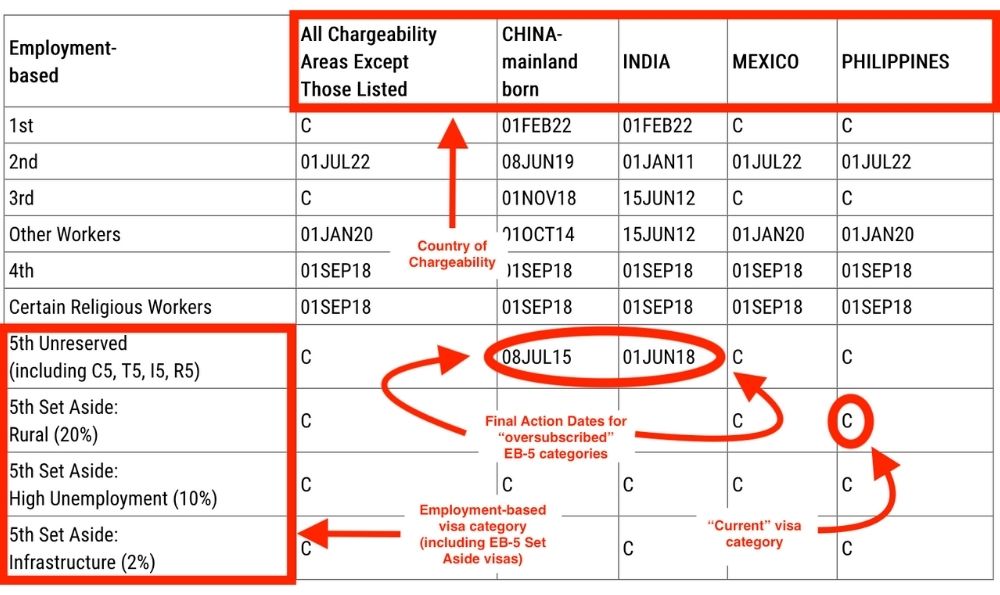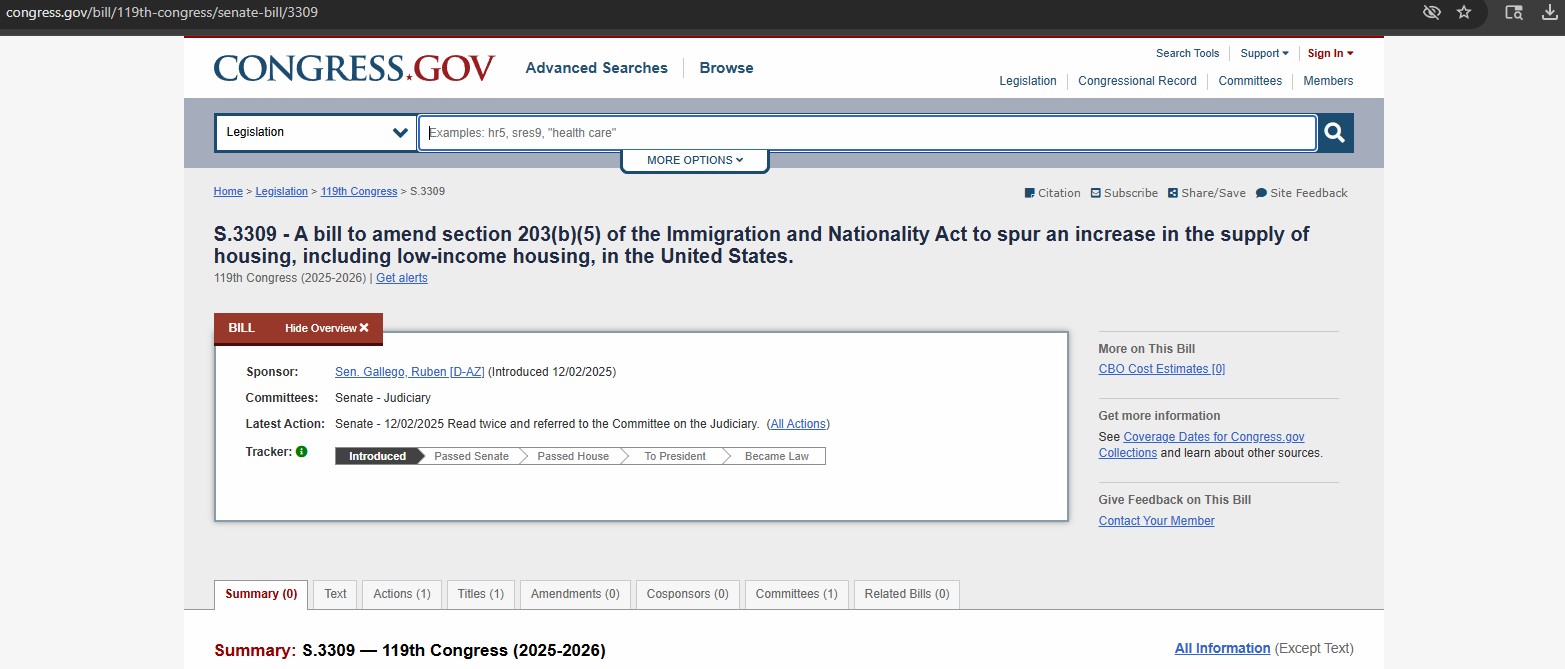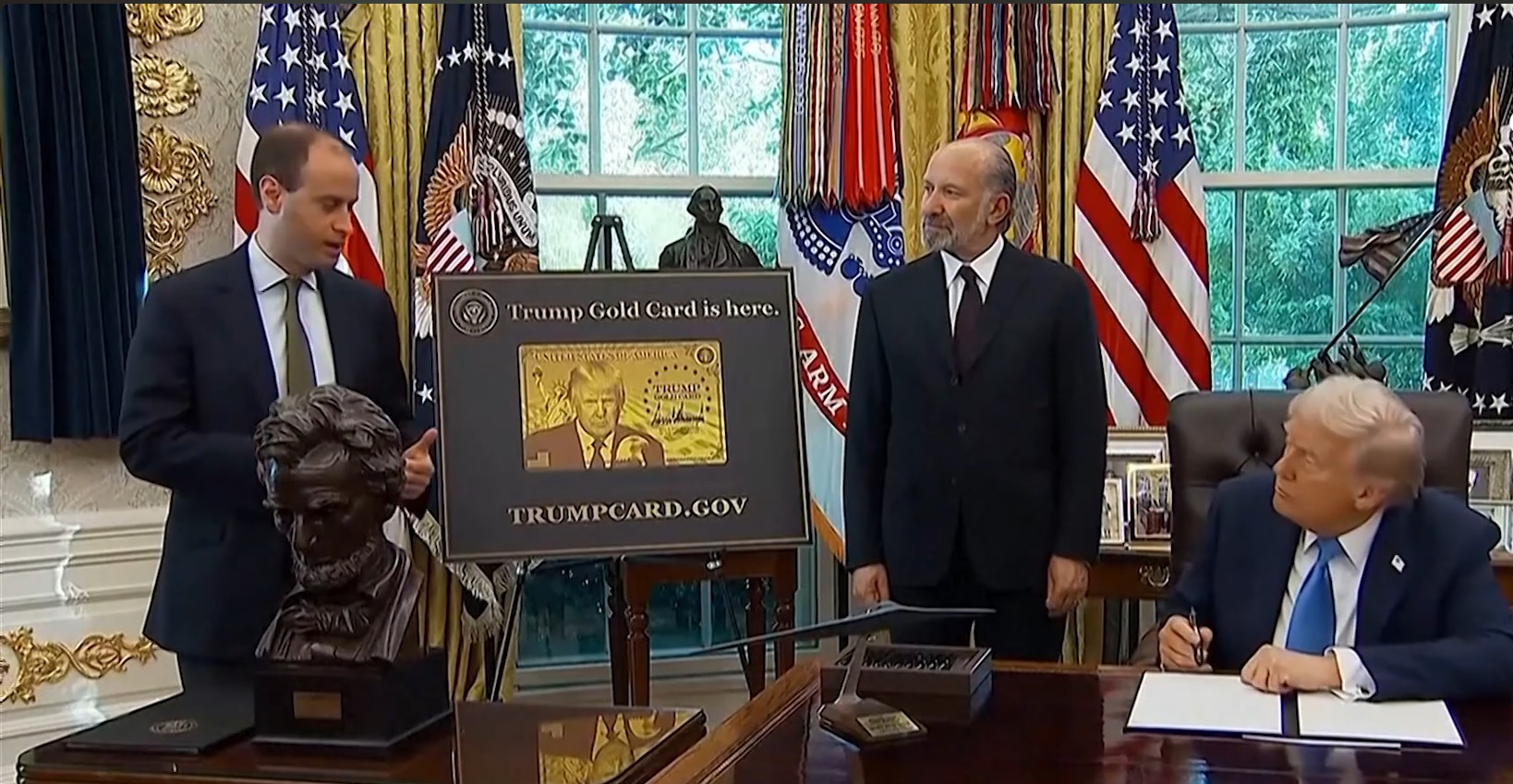How does the Visa Bulletin work for EB-5 investors?
19th April, 2023
In this first installment of the Visa Backlog series, AIIA offers a comprehensive introduction to the EB-5 program, how the visa bulletin plays into it, as well as how EB-5 investors should interpret the visa bulletin in lieu of their own priority dates. This information should be especially important to investors who face extended backlog based on their country of chargeability.

What is an Immigrant Visa?
Immigrant Visas (IVs) are applications for permanent residence, whereas nonimmigrant visas (NIVs) are issued to petitioners wishing for temporary work, stay, study, or other reasons for a finite period of time. Immigrant categories which issue a green card are IVs, given the green card indicates “lawful permanent residence”. For example, an IV would include EB-2 or EB-5 visas. NIVs include H-1B, F-1, and E-2 visas.
An IV is NOT quite a green card, but rather a document stamped into your visa which grants an individual the right to enter the country within a specific period of time and receive a green card once they land. IVs are issued to EB-5 applicants living outside the U.S. after consular processing and the visa interview stage. For EB-5 applicants living in the U.S. on a non-EB-5 visa and doing Adjustment of Status, they will get the green card after USCIS has processed their I-485 application. Although their status is directly adjusted to Lawful Permanent Resident Status, US-based applicants still follow the rules of the visa bulletin discussed below.
Visa Category
Another feature of an immigrant’s application is their “visa category”. Immigrant categories determine what type of visa the applicant will receive, whether it is employment-based or family-sponsored. Each immigrant visa category has a different number of visas available under their respective annual limit, and EB-5 is no exception. There are two main types of visa categories: Employment-based (EB) visas and Family-sponsored (FS) visas. Employment based visas are tied to an individual’s employment or some other tie to U.S. commerce. Therefore EB-5 investors are grouped in with EB visas.
The “5” in EB-5 means employment based “fifth preference” category. Preferences indicate the qualifications required for an applicant to apply through this category. For example, EB-1 petitioners are required to have far more qualifications than EB-2 or EB-3 candidates. EB-5 is fifth preference because it holds no requirements on who can apply for an EB-5 visa based on their employment, education, skills, or English-speaking abilities. EB-5 only requires an investment sustained under specific constraints.
What is the Visa Bulletin?
The visa bulletin is a tool used by the U.S. Department of State to provide information on visa availability for the applicable month, as well as other immigrant visa related updates. The final action dates which are listed in the bulletin are established in an effort to ensure that the maximum number of visas can be issued each year without exceeding the applicable limits specified by law.
The Department of State (DOS) makes a limited number of visas available on a monthly basis each fiscal year (FY) which starts October 1st of each year, and runs through September 30th. The visa bulletin helps to ensure that the DOS does not exceed the number of allowed visas each year based on the various visa categories and per-country limits. The DOS and U.S. Citizenship and Immigrant Services (USCIS), both use the visa bulletin to determine whether an immigrant petition is eligible for a visa. The DOS is responsible for determining the final action dates listed in the visa bulletin based on both DOS and USCIS’s use of visa numbers each month. The dates which are established throughout the year by DOS are done in a manner to maximize number use, while limiting any volatility in those dates. The dates can remain the same when number use is at the desired monthly level, advanced if number use needs to be increased in an attempt to reach the annual limit, or in certain cases retrogress the date (move the date backwards) if continued number use within the existing date would result in the annual visa limit being exceeded. Therefore, in many ways, the DOS has a semblance of control over how “relaxed” or “constrictive” the bulletin can be throughout the fiscal year.
The public can view the current visa bulletin, which is updated monthly, on the travel.state.gov website as USCIS and DOS continue to adjudicate petitions and issue visas. The visa bulletin is only intended to show the current availability of visa numbers for that specific month based on current and estimated visa number use under the applicable annual limits. The listing of a “final action date” indicates that a specific category is “oversubscribed”, which means that the number of eligible applicants exceeds the amount of visas available under the applicable annual limit. A final action date listed in the visa bulletin serves as a limit on the number of applicants which may be eligible for action on their case resulting in visa issuance or adjustment of status during that month. All applicants with a priority date (normally the date USCIS receives the first immigrant petition) after the final action date will be held in limbo until the final action date reaches their priority date (PD). What this means is even if your immigrant petition receives an approval, you still need to wait until your PD is ‘current’ AKA on or prior to the active final action date in order to receive your Green Card.
The visa bulletin is a tool which is to be used during your immigration process to inform you on what dates are currently eligible for final action and gather other information regarding future visa availability which may be relevant to your specific category. However, it cannot give you an accurate idea of the wait time you may face given that the visa demand may exceed the visas which are available currently. The visa bulletin is not intended to provide any overview of what the wait time for your case is or how many visas may actually be available in future months, but rather what categories are current or not based on the best information available at the time that month’s bulletin is published. The visa bulletin only indicates there are visas available, but not how many. It is adjusted month-by-month based on a comparison of past visa number use, estimated visa number use based on that month’s bulletin, and the amount of numbers which remain available for use for the remainder of the year. Therefore, slow rates of adjudication, petitions for multiple family members, and prioritization procedures all may affect how the visa bulletin changes monthly. It should by no means be expected that all applicants with a priority date earlier than the final action date have been processed at any point of time. Applicants proceed with action on their case at their own pace, and as a result there can be hundreds or thousands of applicants who are still pending processing within the listed date.
As a hypothetical example, the category of EB-5 visas for Vietnamese applicants may be listed as “current’, yet the actual number of applicants which have not yet had their I-526/526E cases adjudicated may be extremely high. Since those applicants may not have yet received final action on their case in a timely manner, the Vietnamese applicant pool may actually exceed the amount of available visas. The visa bulletin will not reflect this fact until the amount of visa numbers which are actually being issued is expected to exceed the annual limit of EB-5 visas for Vietnamese applicants. Once visa number use increases to a level at which the annual limit would be exceeded, a final action date will be listed to control the future issuance of visas. This means that an applicant who applies when the category is current today, may find that a final action date has been imposed for their visa category by the time they have submitted all of the documentation required for final action on their case. This would mean that the category is “backlogged”, which is why applicants should always act on their case in a very timely manner, and not intentionally delay required actions on the assumption that a visa will always be available.
The EB-5 visa category has an annual limit of 7.1% of the Worldwide total of employment-based visas, which is a minimum of 9,940 EB-5 immigrant visas per fiscal year. Each immigration petition represents an application for a visa for the main investor, their spouse and children, with each derivative family member counted as one visa used against (or subtracted from) the respective annual limit. That means if a family of four applies for EB-5, then that one EB-5 petition would result in the use of four EB-5 visas from the per-country and Worldwide EB-5 visa limit. Counting derivative applicants from an EB-5 petition against EB-5 annual visa limits is one of the many reasons why visa backlogs, and subsequently retrogression have become so common in the EB-5 program.
Retrogression of the final action dates and visa backlogs are not rare or uncommon. Currently, all Chinese EB-5 applicants (who invested before March 2022) have to wait until China’s final action date moves past March 2015. Therefore, an investor from China that filed in November 2019 could easily face nearly a decade or more of wait time until they can actually receive a Green Card. Waiting until your priority date becomes current can take many years and even decades, as some countries have seen with other employment based categories.
Let’s take a hypothetical situation we may see in the near future: What if 200 I-526E petitions are filed in the rural EB-5 category for a specific country? If we assume that USCIS is efficient and issues all allowed rural set-aside visas in each fiscal year with no roll over visas available from previous years, and an average of 2.5 applicants per petition, then 500 visas would be demanded from the rural category for that year. Here is our math so far:
200 petitions filed by applicants from a single country x 2.5 visa applicants per petition = 500 total visas demanded
If we divide that demand by the average of 139 rural visas allowed per year under the per-country caps, then a 3.6 year backlog would be created in the rural set aside category for that country.
Rural set asides: 9940 (minimum visa allowance per year for EB-5) x .2 (Rural set asides = 20% of total EB-5 allowance) = 1988 total rural visas allowed per year
1988 x 0.07 (per country cap limit of 7.0%) = 139 rural visas available to a single country per year
500 applicants / 139 = 3.597 calendar years until all rural set aside visas can be issued to applicants from that country
Using this example, one can see how easily such a backlog can be created.
How to Read the Visa Bulletin
The visa bulletin works by showing the status of currently available visas, indicated by a visa category’s status as “current” or “C”. “Current” means that for that month, numbers are immediately available under the annual limit, though it does not indicate how many. If numbers are not immediately available in the petitioner’s category, then this will be indicated by the listing of a final action date (shown as DD/MM/YYYY). These dates limit visa number issuance for immigrants from a specific country of chargeability and/or visa category. An immigrant petitioner receives a filing date from USCIS after filing the first application in their immigration process. The filing date is shown on the I-526/I-526E receipt notice, form I-797, which investors receive once USCIS has received their initial application at the Investor Program Office (IPO). When the I-526/I-526E is approved, then the filing date becomes a priority date. If an immigrant’s priority date is before the date listed in Chart A or B of the visa bulletin, that immigrant is eligible to move forward with filing for consular processing or adjustment of status once the I-526/526E is approved. If not, their petition will sit in storage after receiving an approval, up until more visas are made available to applicants from that specific country.

Final Action Dates for Employment-Based applicants – May 2023
Final Action Dates and Dates for Filing
The DOS publishes the Visa Bulletin for the upcoming month between the 10th to 15th of every month (i.e. the February 2023 Visa Bulletin would be published between the 10th and 15th of January). The dates published in the bulletin determine whether investors are eligible for potential final action on their case during that month, assuming that they have filed all appropriate documentation.
The Visa Bulletin contains two charts:
Chart A contains “Final Action Dates for Employment-Based Preference Cases” (who may receive visas during that particular month).
Chart B contains “Dates for Filing of Employment-Based Visa Applications” (who may file documents which are required for further processing).
Chart A contains information about who may receive visas. If the chart indicates “Current”, then all applicants from that country who have submitted all of their required documents are eligible for final action on their case, but if a final action date is listed for a specific country, then only those with earlier priority dates are eligible for final action on their case, whether through consular processing or adjustment of status. If the chart indicates “U” (Unavailable), that means the annual limit for visas has been reached for that specific country/category in the current FY, and new visas will be released only at the beginning of the next fiscal year which begins October 1st.
For those following the Consular Processing route, Chart B contains information about who may file their documents with the National Visa Center (NVC). For those following the adjustment of status route, USCIS will indicate in their website whether applications can be filed based on Chart B, but those applications will still be finalized only when the applicant’s priority date becomes eligible according to Chart A. These charts are sometimes used interchangeably by USCIS depending on the immigration demand that month.
Note: The applicants should have filed all of the required information based on the Application Filing Dates listed in Chart B of the visa bulletin, and never wait to do so until their priority date is reached by the Final Action Date listed in Chart A. For example, if an applicant’s date becomes eligible in May, at which time they finally begin submitting the requested/required documents, the date may have retrogressed by the time such document processing has been completed by DOS/USCIS several months later. Had they submitted the documents much earlier when they could have done so based on Chart B, their case may have been finalized in May.
Where am I in the Visa Bulletin?
The visa bulletin gives a status report specifically for the visa stage, and for applicants eligible to apply for visas. Immigrants who already have I-526 or I-526E approval can consult the current visa bulletin to see whether they are eligible to proceed in visa application filing or final action. An applicant’s priority date acts like a numbered ticket, with the oldest priority dates being at the head of the queue and closest to action on visa applications. The “final action date” published in monthly visa bulletins corresponds to the priority date of the first qualified applicant who could not be accommodated for a visa number. A “final action date” of “Current” indicates sufficient visa numbers to accommodate all qualified applicants in that month. When it establishes a final action date for a visa category, the DOS is attempting to ensure that only the earliest applicants receive visas based on the number available under the annual limit.
The current visa bulletin has limited relevance for investors who have not yet reached the visa stage. Even if visas are currently available in a category, people without I-526/I-526E approval cannot apply for those visas because petition approval is a pre-condition to establish a priority date and apply for a visa. And because people still waiting for I-526/I-526E approval are not qualified visa applicants yet, the visa bulletin does not account for them. The visa bulletin only reacts to EB-5 demand once it reaches the visa stage, which means that it does not predict or signal backlogs from investors starting the process. If EB-5 Investor X has an I-526 filing date that’s eligible for final action according to the current visa bulletin, that makes no difference if the investor currently lacks I-526 approval and thus cannot apply for a visa yet. EB-5 Investor X can best assess his place in the visa queue not by looking at the current visa bulletin, but by looking at I-526 filings trends. Analysis of pending I-526 demand can assist predicting the visa bulletin that will matter for EB-5 Investor X: the visa bulletin that will be published on the future date when he (and other investors) will have exited I-526 processing and reached the visa stage.
The visa bulletin directly affects people with pending I-526 and I-526E in one circumstance: the “visa availability approach” to I-526 processing. Under this approach, which affects applicants in categories with visa-stage backlogs, USCIS only adjudicates I-526 with filing dates before the current Visa Bulletin Chart B Date for filing.
Country of Chargeability
Country of chargeability is usually the immigrant petitioner’s country of birth. This can vary in some cases, if an immigrant filed to be “charged” (i.e. “assigned”) under their spouse or parent’s country of birth. To ensure applicants from all countries have a fair shot at receiving IVs the Immigration and Nationality Act (INA) imposes a 7% per-country limit for the visa category to prevent a few countries from monopolizing all of the numbers. For example, there may be 30,000 investors from country X, and only 3,000 investors from country Y, but neither can use more than 7% of the numbers available under the EB-5 visa limit(s). Otherwise, country X could have used all of the available visa numbers. However, the imposition of the 7% limit could mean that the applicants from country X may have a longer wait for a visa to become available than the applicants from country Y. If there were otherwise unused visa numbers available under the Worldwide limit at the end of the fiscal year, then the per-visa cap is lifted to allow backlogged countries to use more than 7% of the visas still unclaimed under Worldwide EB-5 limit.
Reserved versus Unreserved Visas in EB-5
The Immigrant and Nationality Act (INA) apportions 10,000 available visas for EB-5 applicants each FY. However, this minimal visa allowance is further divided among “unreserved” and “reserved” visa categories since the Reform and Integrity Act (RIA) was passed.
The Set-Aside (or “reserve”) visa categories areis reserved for investors who have invested their funds into a project which qualifies for infrastructure, rural or urban distressed visa set asides (indicated by a “TEA” status). These visas are taken from the overall EB-5 visa pool and “set aside” for qualifying project investors. Infrastructure projects occupy 2% of the annual visa pool, rural occupies 20%, and high unemployment occupies 10%. This means that around 3,700 visas make up the set aside category, and roughly 6,300 are left in the annual visa allowance for the “unreserved” visa category. These unreserved visas are given to any applicant whose projects do not exist in a “TEA” (or Targeted Employment Area) or qualify as an infrastructure or rural project. Reserved visas which are left unused at the end of the fiscal year are rolled over into the same reserved visa category for the upcoming FY. Following the second fiscal year, any unused visas will then be released into the unreserved visa category.
Visa Backlog and Conclusion
Learning how to read the visa bulletin and what the implications of its release are every month is a task in itself. However, the Visa Bulletin holds many clues and helps contextualize the visa backlog problem, which we are seeing in retrogressed categories like unreserved Chinese and Indian applications. To understand the full scale of the visa backlog problem, EB-5 investors must understand the visa bulletin and its purpose. To learn more about the visa backlog, read the next blog in this series: the EB-5 Visa Backlog, where we will discuss inherent problems with the current visa backlogs, what it means for applicants in these categories, and how it affects the legitimacy of the EB-5 program.
Information in this blog is immensely helpful to all EB-5 investors and AIIA has invested extensively in building various resources for all investors – new and current. If this information is helpful to you, and you would like to help us in creating more informative content for the EB-5 community, please consider supporting our efforts by becoming a member or donating to our cause. Any contribution towards our advocacy efforts, content creation and our organization really helps make a difference in the work we do for the EB-5 investor community. If you are a member of the EB-5 community and would like to receive further information about AIIA’s lobbying initiatives and other advocacy efforts, please sign up via our contact form.
Leave your comments
Responses (1)
Related Posts

We Congratulate Senator Gallego for New Legislation that Leverages the EB-5 Program to Build Affordable Housing

We Won The EB-5 Fee Increase Lawsuit

One Year Left to Invest in a EB-5 Regional Center Project

Trump Gold Card: A New Green Card Pathway Competing with EB-5

Stay Up To Date With AIIA
Join our newsletter to stay up to date on EB-5 updates.
By subscribing you agree to with our Privacy Policy and provide consent to receive updates from our company.
Recommended Resources

The Issue of Aging Out in EB-5
The Child Status Protection Act (CSPA) helps freeze a child’s age on EB-5 petitions, but long visa backlogs still risk...
Read More
The Sale of EB-5 Securities Offerings
EB-5 securities sales often use Regulation D (U.S. investors) and Regulation S (foreign investors) exemptions to avoid SEC registration while...
Read More
Choosing between Direct vs Regional Center EB-5 financing
Direct EB-5 suits single investors creating direct jobs; Regional Center EB-5 pools multiple investors, counting direct and indirect jobs for...
Read MoreRecent Blog Posts

We Congratulate Senator Gallego for New Legislation that Leverages the EB-5 Program to Build Affordable Housing
Sen. Gallego's EB-5 bill mobilizes foreign capital to build affordable housing. This collaboration has boosted AIIA's Congressional ties & credibility...
Learn More
We Won The EB-5 Fee Increase Lawsuit
AIIA successfully won its lawsuit against USCIS’s April 2024 EB-5 fee increases, with a federal judge ruling that the agency...
Learn More
One Year Left to Invest in a EB-5 Regional Center Project
AIIA warns that EB-5 Regional Center investors will lose protection after Sept. 30, 2026 unless they file I-526E petitions before...
Learn More
Trump Gold Card: A New Green Card Pathway Competing with EB-5
Trump’s new $1M “Gold Card” visa plan competes directly with EB-5 and raises serious legal concerns, as it lacks statutory...
Learn MoreGet In Touch With Us
If you have any questions, inquiries, or collaboration proposals, please don’t hesitate to reach out to us.

How does one determine time taken to remove conditions on issued Green Cards for EB5 applicants from India ? eg. I have received my Green Card under EB5 category in July 2019 which expired in July 2021 and now extended by 48 months till July 2025. When can I expect conditions to be removed to make it a permanent Green Card with no expiry ?